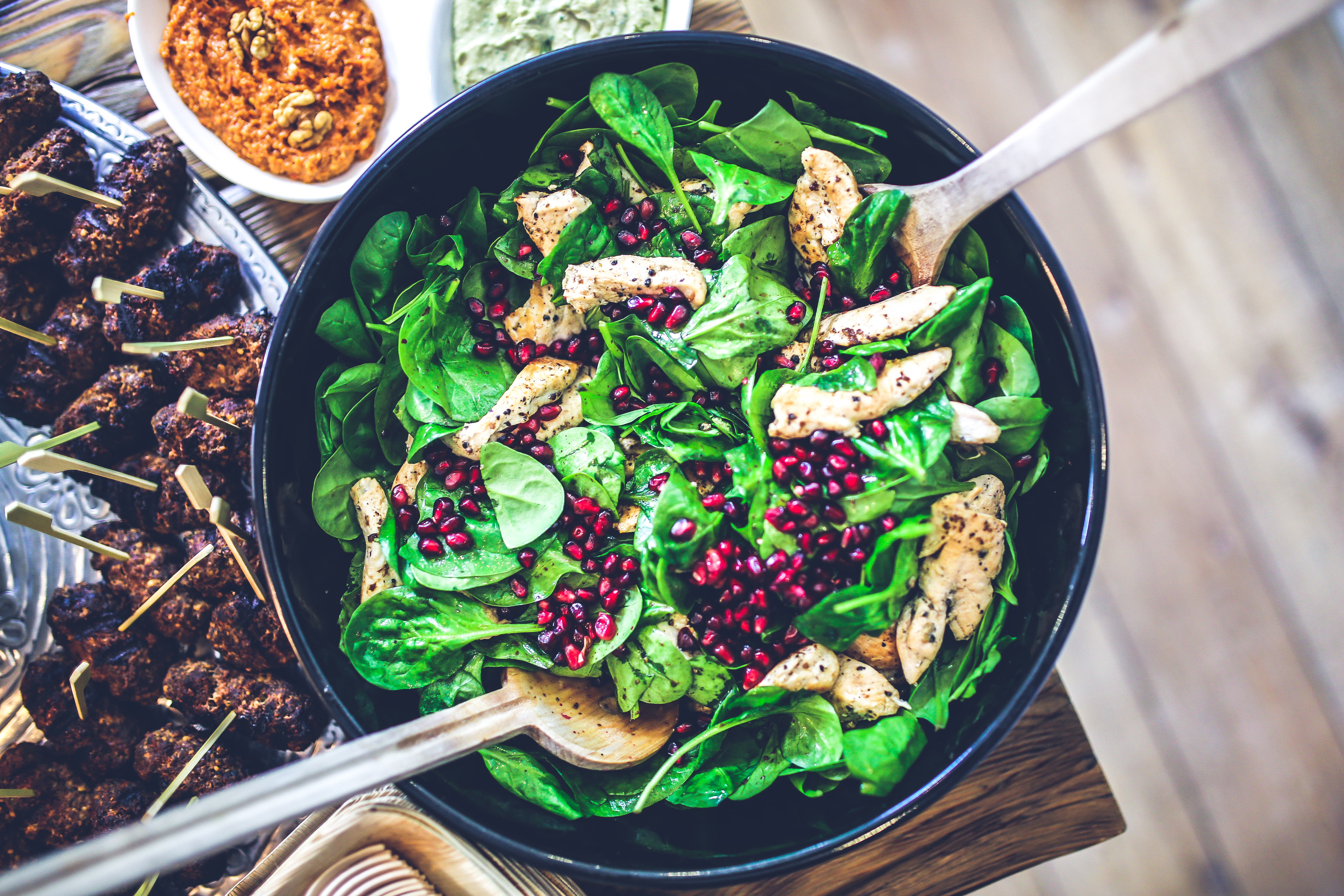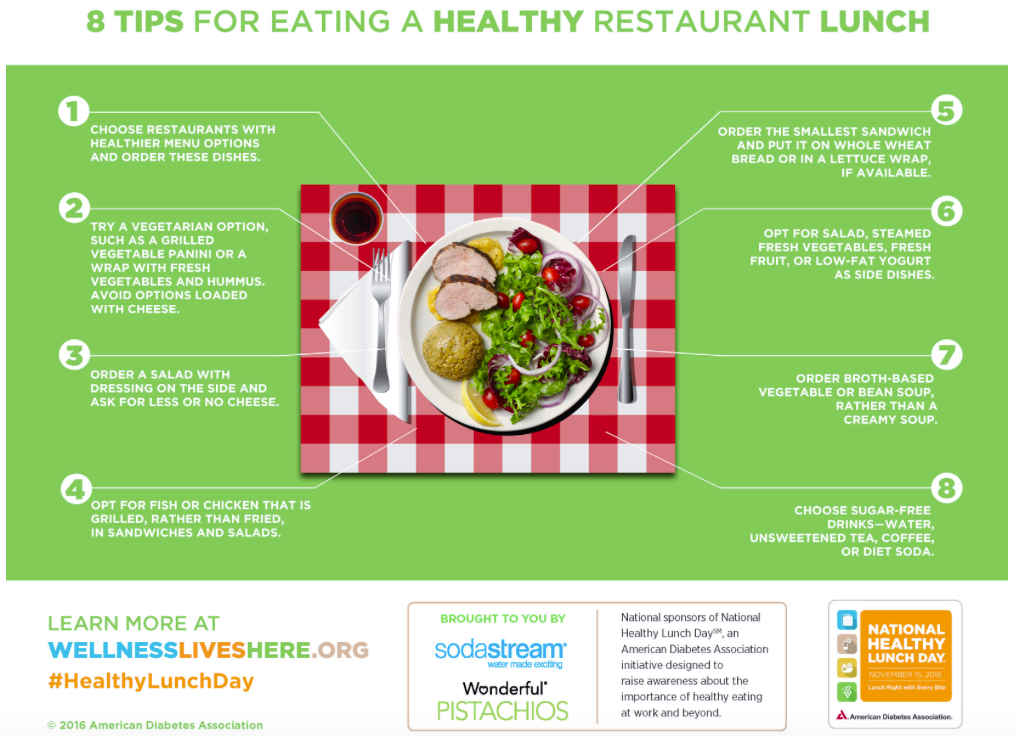Transparency is extremely important to us, so we are letting you know that we may receive a commission on some of links you click on from this page. See our disclaimer.
Today is National Healthy Lunch Day (of course, we try to recognize healthy lunch day every day!), which means it's a good time for quick reminders on how to eat right (and not cut corners) during the busy and stressful workday.
We've reported frequently on healthy eating tips, including here when Interactive Health Registered Dietitian Kerry Clifford offered health notes on Good Day, Chicago. We also recently reported on Healthy Eating Day.
One concern around healthy eating is that, in the immediate term, it can seem to cost more. Harvard's T.H. Chan School of Public Health reported in 2013 that “the healthiest diets cost about $1.50 more per day than the least healthy diets, according to new research from Harvard School of Public Health (HSPH). The finding is based on the most comprehensive examination to date comparing prices of healthy foods and diet patterns vs. less healthy ones.” The study was published in BMJ (British Medical Journal) Open.
However, one shouldn't get fooled by short-term saves. Said Dariush Mozaffarian, the study’s senior author and associate professor at HSPH and Harvard Medical School: “While healthier diets did cost more, the difference was smaller than many people might have expected. Over the course of a year, $1.50/day more for eating a healthy diet would increase food costs for one person by about $550 per year. This would represent a real burden for some families, and we need policies to help offset these costs. On the other hand, this price difference is very small in comparison to the economic costs of diet-related chronic diseases, which would be dramatically reduced by healthy diets.”
Others are looking to help, as well:
Medical Daily offers “3 Nutritious, Fresh Sandwich Recipes,” as well as a video on how to eat healthy while on a budget.
WTHR-TV spoke with a registered dietitian who pointed out some useful information how simple substitutions can make a big difference on nutrition:
“When it comes to foods you grab from home, be careful what you pack. Take for example a typical packed lunch containing:
- White bread
- Salami
- Potato chips
- Two cookies
- Soda
The registered dietitian said “that meal alone adds up to: 1000 calories; 58 grams of fat; 1700 mg of sodium.” By replacing a few things, those numbers come down. Instead try:
- Whole wheat bread
- Lean turkey or chicken
- Corn chips
- Carrots
- Water
Now the numbers become: 555 calories; 22 grams of fat; 821 mg of sodium. The report also notes: “On top of that, it’s actually more food.”
Want more? This terrific New York Times slide series, which we've brought readers before, remains extremely helpful.
Finally, here's a useful infographic from the American Diabetes Association:





0 Comments